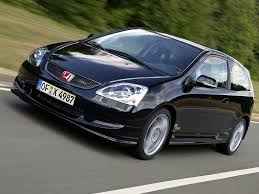The History Of Born Of Ford Motor
The Dream Becomes a Business
 Ford Motor Company entered the business world on June 16, 1903, when Henry Ford and 11 business associates signed the company's articles of incorporation. With $28,000 in cash, the pioneering industrialists gave birth to what was to become one of the world's largest corporations. Few companies are as closely identified with the history and development of industry and society throughout the 20th century as Ford Motor Company.
Ford Motor Company entered the business world on June 16, 1903, when Henry Ford and 11 business associates signed the company's articles of incorporation. With $28,000 in cash, the pioneering industrialists gave birth to what was to become one of the world's largest corporations. Few companies are as closely identified with the history and development of industry and society throughout the 20th century as Ford Motor Company.As with most great enterprises, Ford Motor Company's beginnings were modest. The company had anxious moments in its infancy. The earliest record of a shipment is July 20, 1903, approximately one month after incorporation, to a Detroit physician. With the company's first sale came hope—a young Ford Motor Company had taken its first steps.
Mass Production on the Line
 Perhaps Ford Motor Company's single greatest contribution to automotive manufacturing was the moving assembly line. First implemented at the Highland Park plant (in Michigan, US) in 1913, the new technique allowed individual workers to stay in one place and perform the same task repeatedly on multiple vehicles that passed by them. The line proved tremendously efficient, helping the company far surpass the production levels of their competitors—and making the vehicles more affordable.
Perhaps Ford Motor Company's single greatest contribution to automotive manufacturing was the moving assembly line. First implemented at the Highland Park plant (in Michigan, US) in 1913, the new technique allowed individual workers to stay in one place and perform the same task repeatedly on multiple vehicles that passed by them. The line proved tremendously efficient, helping the company far surpass the production levels of their competitors—and making the vehicles more affordable.The First Vehicles
 Henry Ford insisted that the company's future lay in the production of affordable cars for a mass market. Beginning in 1903, the company began using the first 19 letters of the alphabet to name new cars. In 1908, the Model T was born. 19 years and 15 million Model T's later, Ford Motor Company was a giant industrial complex that spanned the globe. In 1925, Ford Motor Company acquired the Lincoln Motor Company, thus branching out into luxury cars, and in the 1930's, the Mercury division was created to establish a division centered on mid-priced cars. Ford Motor Company was growing.
Henry Ford insisted that the company's future lay in the production of affordable cars for a mass market. Beginning in 1903, the company began using the first 19 letters of the alphabet to name new cars. In 1908, the Model T was born. 19 years and 15 million Model T's later, Ford Motor Company was a giant industrial complex that spanned the globe. In 1925, Ford Motor Company acquired the Lincoln Motor Company, thus branching out into luxury cars, and in the 1930's, the Mercury division was created to establish a division centered on mid-priced cars. Ford Motor Company was growing.Becoming a Global Company
 In the 50's came the Thunderbird and the chance to own a part of Ford Motor Company. The company went public and, on Feb. 24, 1956, had about 350,000 new stockholders. Henry Ford II's keen perception of political and economic trends in the 50's led to the global expansion of FMC in the 60's, and the establishment of Ford of Europe in 1967, 20 years ahead of the European Economic Community's arrival. The company established its North American Automotive Operations in 1971, consolidating U.S., Canadian, and Mexican operations more than two decades ahead of the North American Free Trade Agreement.
In the 50's came the Thunderbird and the chance to own a part of Ford Motor Company. The company went public and, on Feb. 24, 1956, had about 350,000 new stockholders. Henry Ford II's keen perception of political and economic trends in the 50's led to the global expansion of FMC in the 60's, and the establishment of Ford of Europe in 1967, 20 years ahead of the European Economic Community's arrival. The company established its North American Automotive Operations in 1971, consolidating U.S., Canadian, and Mexican operations more than two decades ahead of the North American Free Trade Agreement.Ford Motor Company started the last century with a single man envisioning products that would meet the needs of people in a world on the verge of high-gear industrialization. Today, Ford Motor Company is a family of automotive brands consisting of: Ford, Lincoln, Mercury, Mazda, Jaguar, Land Rover, Aston Martin, and Volvo. The company is beginning its second century of existence with a worldwide organization that retains and expands Henry Ford's heritage by developing products that serve the varying and ever-changing needs of people in the global community
if you need more information abaout ford Motor Products visit here
Read more!






















